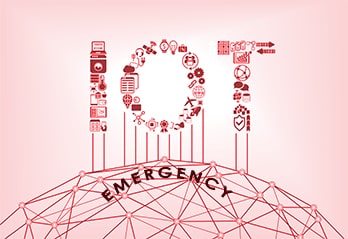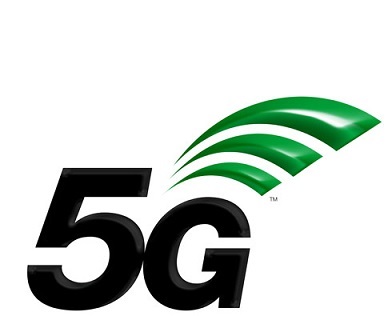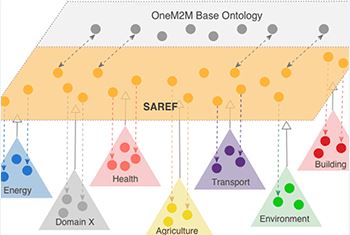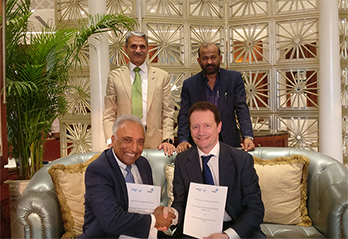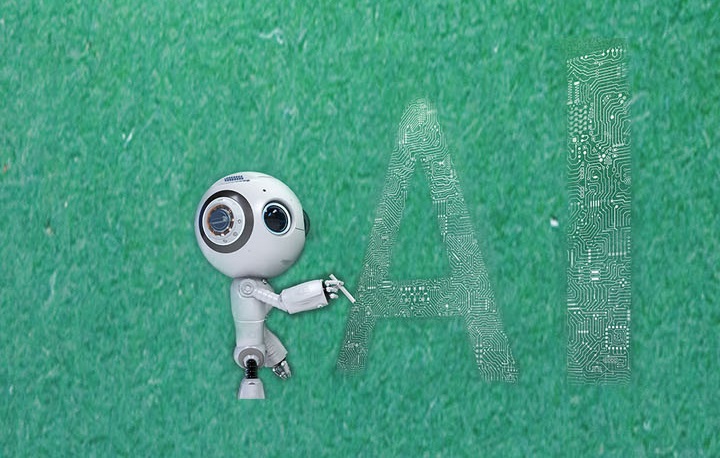The ETSI Special Committee EMTEL (emergency communications) has released a report, ETSI TR 103 582, studying use cases and communications involving IoT devices in the provision of emergency situations. This report also provides recommendations on standardization requirements that could enhance the safety of these communications.
This report considers communications involving IoT devices in all types of emergency situations, such as emergency calling, mission critical communications, Public Warning System communications and adds a new emergency communications domain identified as automated emergency response, where IoT devices can act after receiving a trigger to prevent hazardous situations.
ETSI’s industry specification group for Network Function Virtualisation (ETSI NFV) has enhanced the system as well as designed new features to support 5G networks. ETSI NFV has added 5G resource management and orchestration aspects on top of the NFV Release 2 architecture framework.
New NFV Release 3 features that closely relate to 5G include Support for network slicing in NFV, Management over multi-administrative domains, and Multi-site network connectivity. These features are essential to address the variety of applications expected to run on top of a 5G system, whether using distributed resources over multiple sites, centralized or a combination of both.
ETSI and 3GPP have collaborated on specification work for ETSI NFV Release 2 and 3, to ensure interoperability between management systems, covering upper orchestration and management layers, such as network management or application management.
ETSI releases 3 new ontology specifications for Smart Cities, Industry 4.0 and Smart Agriculture
The ETSI's SmartM2M Technical Committee announced the releasae of three new specifications for the Smart cities, Industry and Manufacturing, and Smart agriculture and Food chain domains.. This is in addition to the first three SAREF (Smart Applications REFerence ontology) specifications for energy, environment and buildings. These standards enable interoperability and therefore contribute to the development of the global digital market.
European Commission conducted a survey when it launched the SMART 2013/0077 Standardization Initiative on smart appliances. The outcome was to create commonly agreed semantics for smart appliances and build a reference ontology as an interoperability language, and, with the help of TC smartM2M and oneM2M, these standards are now a reality.
The ETSI Technical Committee ATTM has just released the ETSI specification TS 105 176-2, to provide interoperable Ethernet and Power over Coax solutions for IP video surveillance.
The specification was developed to enable an energy efficient and sustainable transition from legacy analogue video surveillance systems to IP video surveillance systems thanks to the transmission of IP data over coaxial cable infrastructures, while ensuring safe and reliable power delivery.
ETSI TS 105 176-2 implementation ensures interoperability between a set of communication devices such as IP cameras, IP switches, video intercom systems, displays or IP audio devices connected over a coaxial cable infrastructure to a receiver device such as a power over coax switch device. This specification provides the ability to extend a video surveillance coaxial network with additional IP cameras or devices without having to deploy new cables from the head end device to a new front-end device.
Acknowledging the role of standards, especially in the context of emerging technologies and technologies of the future and the need to collaborate and work in partnership with different types of organizations around the world, COAI, the apex industry association representing leading Telecom, Internet, Technology and Digital Services companies and ETSI, a leading standardization organization for Information and Communication Technology (ICT) standards fulfilling European and global market needs announced to come together once again to work and collaborate on areas of mutual interest.
As part of this collaboration, Seconded European Standardization Expert (SESEI) local representative of ETSI will be working closely with COAI through this MoU to strengthen their relationship and foster a closer co-operation on common agenda items between them and promote ETSI-India cooperation on standards related issues.
The ETSI Industry Specification Group working on IPv6 (ISG IP6) has been extended until December 2020 in order to complete an IPv6-based vehicular networking report and a report on IPv6 security, cybersecurity and privacy.
The ETSI ISG IP6 has already released 7 Group Reports that cover very sensitive areas for the deployment of IPv6. They address 6TiSCH interoperability test specifications, IPv6-based 5G mobile wireless internet deployment, the deployment of IPv6-based SDN and NFV, IPv6-based industrial internet leveraging 6TiSCH technology, the deployment of IPv6-based Internet of Things, the generic migration steps from IPv4 to IPv6 and the IPv6 deployment in the enterprise.
IPv6 was developed to address IPv4 address exhaustion in some parts of the world and enable new internet services with improved end to end security. With the Internet of Things and the growing number of connected devices round the world, IPv6 becomes a necessity.
The ETSI Technical Committee Smart BAN has published ETSI TS 103 327, a standard for Smart Body Area Networks. It establishes standardized service and application interfaces and facilitators, APIs (Application Programming Interfaces) and infrastructure for interoperability management and offers secure interaction and access to any SmartBAN data or entities. The resulting SmartBAN reference architecture is a global and integrated IoT reference architecture, oneM2M and Multi-Agent-based. The architecture is provided with cross-functional components for allowing non SmartBAN enabled environments to interoperate with SmartBAN and addresses network, syntactic, informational and semantic interoperability.
SmartBAN uses a set of low-power embedded devices, mainly sensors, wearables or actuators, to collect and monitor vital data of a human being and their environment, but not exclusively. This ETSI specification will enable, for instance, each patient coming to an emergency room to have their medical history already available, which should lead to an intelligent and accurate intervention.
ETSI launches specification group on Securing Artificial Intelligence
ETSI has announced the creation of a new Industry Specification Group on Securing Artificial Intelligence (ISG SAI). The group will develop technical specifications to mitigate threats arising from the deployment of AI throughout multiple ICT-related industries. This includes threats to AI systems from both conventional sources and other AIs.
The intent of the ISG SAI is therefore to address 3 aspects of artificial intelligence in the standards domain:
- Securing AI from attack e.g. where AI is a component in the system that needs defending
- Mitigating against AI e.g. where AI is the ‘problem’ or is used to improve and enhance other more conventional attack vectors
- Using AI to enhance security measures against attack from other things e.g. AI is part of the ‘solution’ or is used to improve and enhance more conventional countermeasures.
The purpose of the ETSI ISG SAI is to develop the technical knowledge that acts as a baseline in ensuring that artificial intelligence is secure. Stakeholders impacted by the activity of ETSI’s group include end users, manufacturers, operators and governments.
The Linux Foundation, the nonprofit organization enabling mass innovation through sustainable open source, signed a Memorandum of Understanding with ETSI, the independent organization providing global standards for ICT services across all sectors of industry, to bring open source and standards closer and foster synergies between them.
Building on the existing working relationship between the two organizations, the formal collaboration agreement will enable faster information-sharing and deployment of open networking technologies across the industry. The formal link between communities of experts will encourage and enable collaborative activities, joint communication, promotion and events, as well as potential common initiatives related to interoperability and conformance testing.
Areas of mutual interest between ETSI and the Linux Foundation span across a range of technologies, including those focused on NFV, MANO, AI and edge computing.






